
Valerie Otani addresses the theme of Japanese relocation during World War II at the site of the 1942 Portland Assembly Center.Traditional Japanese timber gates strung with metal "internee ID tags" mark station entrances. Vintage news articles are etched in steel and wrapped around the gate legs.
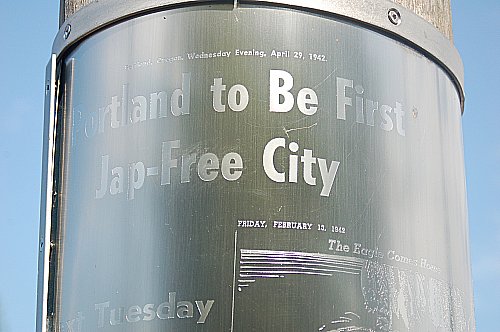
Bronze trunks provide seating on the platforms.
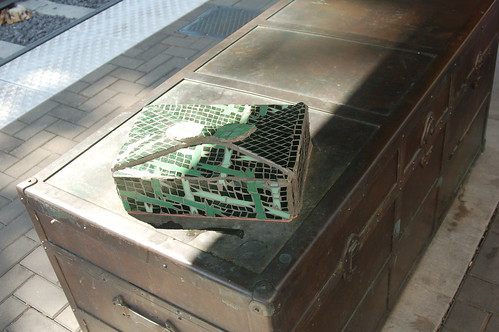
Community maps feature the floor plan of the converted livestock exhibition hall and a copy of the exclusion order.
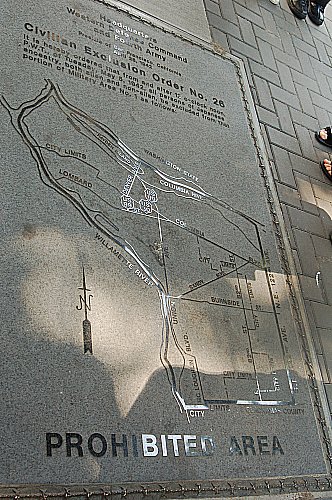
Info from the PCPA Volunteers Newsletter:
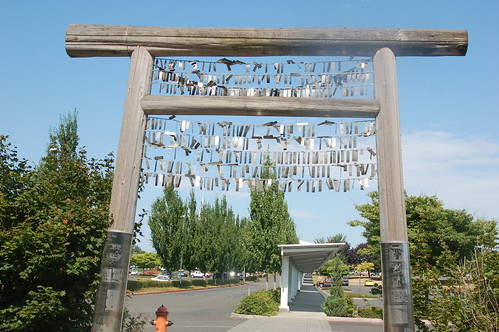
Expo Center station was perhaps the most meaningful of our trip. Valerie Otani was the artist and she designed large timber gates reminiscent of those found in Asia. The gates reflect a transition, or an entrance, or beginning. The Expo Center was historically a livestock yard, but was converted into a temporary WWII internment center for those of Japanese descent.
At the top of the large gate are 4000 metal tags in commemoration of the 4000 internees located there. The tags resemble the ID tags required for all Japanese to wear.
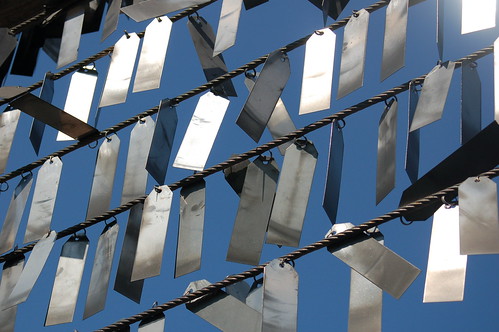
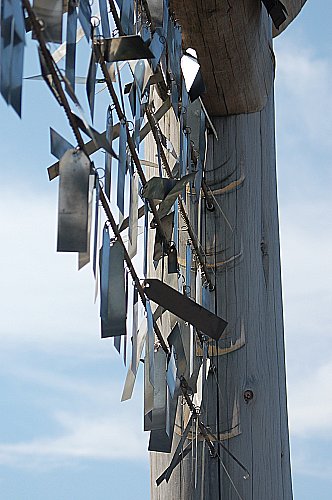
The base of each gate is wrapped in metal to protect its wooden structure – since this is art for the public and must be able to withstand public use. Some metal wrappings are etched with actual newspaper accounts of the time of internment which are shocking (and saddening) to our eyes.
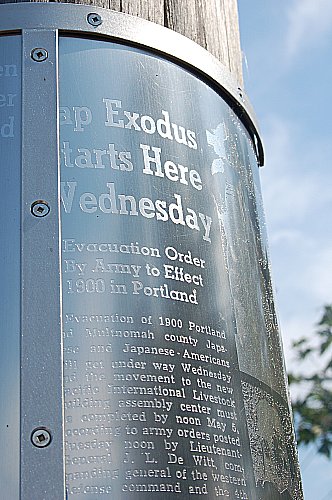

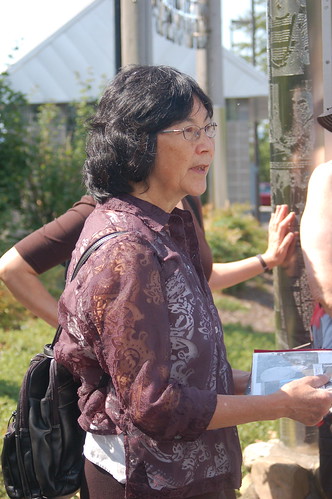
Ms. Otani is of Japanese descent and told us of her family’s story. Her immediate family lived in California and they were interned there. Her grandfather had lived in Hawaii for 30 years before the night of Pearl Harbor when he, and other leaders in the Japanese community, were arrested. He returned to Japan after the war and never saw his U.S. family again.

5 comments:
A beautiful tribute. She no doubt designed it from the heart. Nice post Lynette.
Our treatment of the Japanese in the U.S. and possessions in WWII is not one of our more glorious moments. This is not to dismiss atrocities by the Japanese military in areas conquered by Japan in the war, but the cliché "two wrongs don't make a right" applies here. FDR was in full accord with what was done to the Japanese in the U.S., an inconvenient fact to FDR worshipers. On a related note, It's a shame that Robert Stinnett's "Day of Deceit" hasn't been more widely read. He makes a most convincing case that FDR knew full-well that the Japanese were going to attack Pearl Harbor and deliberately let it happen to get the U.S. into the war - and was perfectly willing to throw General Short and Admiral Kimmell under the bus for his own political ends.
Very interesting. I didn't know about the tags. It is good to see a memorial to remind us of that awful time in U.S. history.
very interesting thanks for such nice post...
Born in the 50's I was not fully aware until high school of the painful chapter in history of what happened to many American Japanese families. May we never forget our history nor may we harbor continued resentment...move forward in hopes history won't repeat such acts....acknowledge, pause to reflect and move on.
Post a Comment